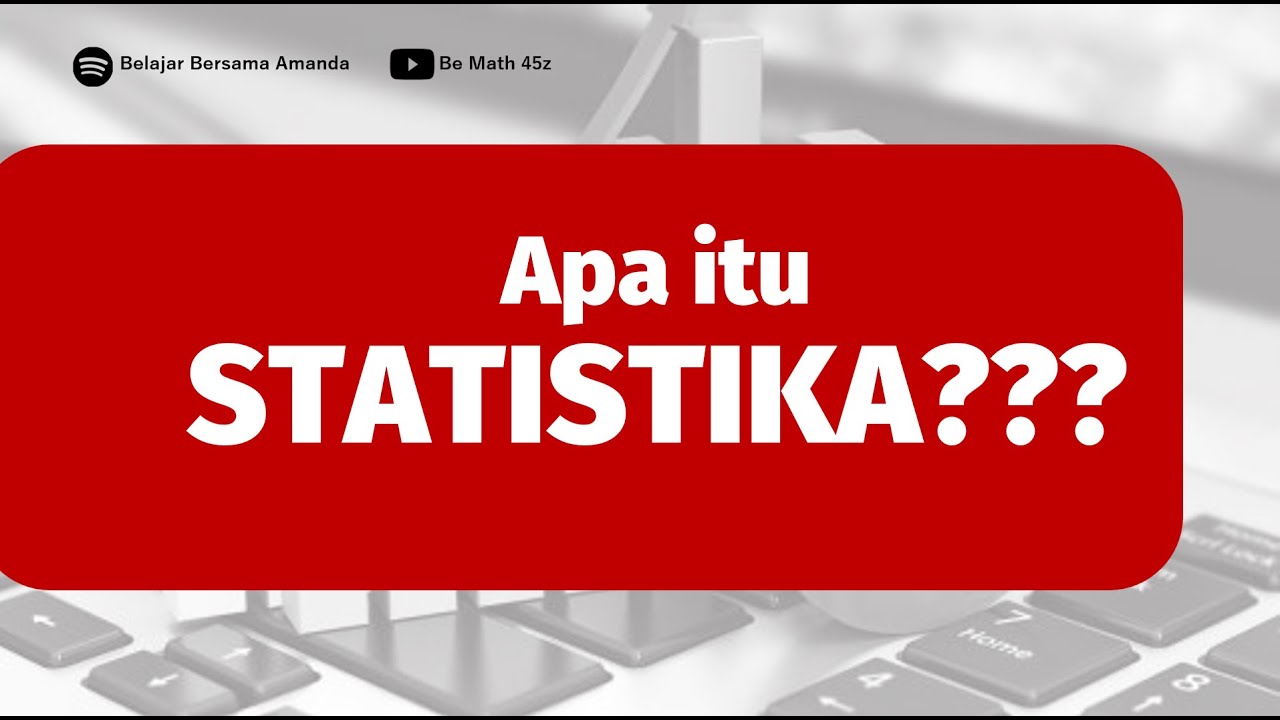KUPAS TUNTAS JENIS-JENIS DATA
Summary
TLDRThis video lecture introduces the different types of data in statistics. It covers three main categories: data based on their nature (qualitative and quantitative), data based on the method of collection (primary and secondary), and data based on the time of collection (cross-sectional and time series). Key distinctions are made within quantitative data, such as nominal, ordinal, interval, and ratio scales, along with practical examples. The lecture aims to help viewers understand the classification of data and their applications in research and statistical analysis.
Takeaways
- 😀 Data can be classified into three main types: according to nature, method of collection, and time of collection.
- 😀 **Qualitative data** (Non-numerical) refers to categories such as gender, ethnicity, or addresses.
- 😀 **Quantitative data** (Numerical) includes measurements and counts, and it can be further subdivided into different types.
- 😀 **Nominal data** is used for categorization without any inherent order, e.g., gender, where numbers only differentiate categories.
- 😀 **Ordinal data** shows categories with a meaningful order, such as educational levels (SD, SMP, SMA), indicating a ranking.
- 😀 **Interval data** has equal intervals between values but no absolute zero, like temperature in Celsius, where 0°C does not mean 'no temperature'.
- 😀 **Ratio data** is similar to interval data but has an absolute zero, making meaningful ratios possible (e.g., income, age).
- 😀 **Primary data** is collected firsthand for specific research, such as surveys or fieldwork.
- 😀 **Secondary data** is previously collected and processed by other entities, such as government reports or institutional data.
- 😀 **Cross-sectional data** is gathered at one specific point in time, providing a snapshot of a particular situation (e.g., population in a specific year).
- 😀 **Time series data** is collected over multiple periods to track changes or trends over time (e.g., inflation rates across years).
Q & A
What are the three main types of data discussed in the lecture?
-The three main types of data are: Data according to its nature (qualitative and quantitative), Data according to the method of acquisition (primary and secondary), and Data according to the time of collection (cross-section and time-series).
What is the key difference between qualitative and quantitative data?
-Qualitative data is non-numerical and includes categories such as names, gender, and addresses. Quantitative data is numerical, involving measurable values like numbers and amounts.
How are quantitative data further classified according to their measurement scales?
-Quantitative data are classified into four measurement scales: nominal, ordinal, interval, and ratio. Each scale represents a different way of categorizing and measuring data.
What does nominal data represent, and can you give an example?
-Nominal data involves categories that distinguish between different items without implying any order. For example, gender is nominal data, where 1 represents male and 2 represents female.
How does ordinal data differ from nominal data?
-Ordinal data not only categorizes but also provides an order or ranking. For example, education levels like 1 = less than SD, 2 = SMP, and 3 = SMA or above show an order of increasing educational attainment.
What is interval data, and how is it different from ratio data?
-Interval data has a known distance between values but lacks an absolute zero point, such as temperature. Ratio data, on the other hand, has both a known distance and an absolute zero, allowing meaningful comparisons of multiples, like salary or age.
Can you provide an example where the difference between interval and ratio data is important?
-In the case of GPA, the difference between two values (like 2.5 and 3.0) is measurable, but there is no absolute zero for GPA. However, salary is ratio data because a salary of 4000 is twice as much as a salary of 2000, and zero salary means no income.
What distinguishes primary data from secondary data?
-Primary data is collected directly by researchers through methods like surveys or fieldwork. Secondary data, however, is pre-existing data collected by others, often available through publications or government reports.
What is the difference between cross-section data and time-series data?
-Cross-section data is collected at one specific point in time, such as the population of a province in a given year. Time-series data is collected over multiple time points to track changes or trends, like inflation rates over several years.
Can you give an example of a time-series dataset?
-An example of time-series data would be the inflation rate of a country from 1998 to 2015, where data is collected annually to observe trends over time.
Outlines

This section is available to paid users only. Please upgrade to access this part.
Upgrade NowMindmap

This section is available to paid users only. Please upgrade to access this part.
Upgrade NowKeywords

This section is available to paid users only. Please upgrade to access this part.
Upgrade NowHighlights

This section is available to paid users only. Please upgrade to access this part.
Upgrade NowTranscripts

This section is available to paid users only. Please upgrade to access this part.
Upgrade Now5.0 / 5 (0 votes)





